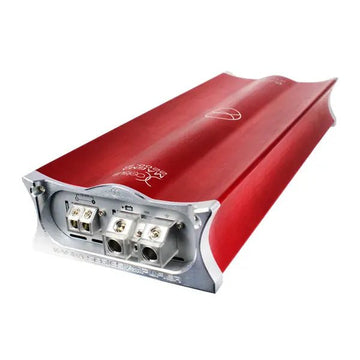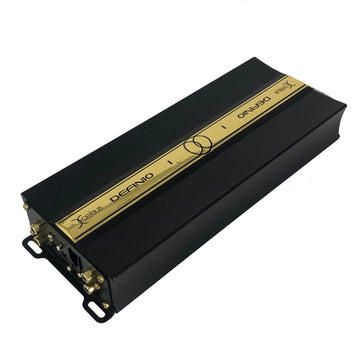What a Monoblock Amplifier Actually Does
A monoblock amplifier is a single channel amplifier built to drive strong bass with stable current delivery. This is different than a four channel or two channel amplifier because the monoblock amplifier focuses on deep low frequency output instead of trying to power many speakers at the same time. The monoblock amplifier keeps the signal path focused and direct. This structure makes the amplifier more efficient in real world subwoofer environments. Car audio systems that need real power benefit from a monoblock amplifier that locks voltage, current, and control into a single load. Subwoofer coils operate more predictably when the amplifier is stable and strong. This is the simple reason why serious car audio builders choose a monoblock amplifier for bass.
How a Monoblock Amplifier Maintains Power at Low Frequency
A monoblock amplifier also helps people match power to box design. Ported enclosures need more dynamic control and sealed enclosures benefit from a steady current floor. A monoblock amplifier can supply both. Many people like the way a monoblock amplifier holds headroom at high volume because this makes the subwoofer produce bass that does not collapse. Voltage swings are a common problem when a weak amplifier tries to support a demanding subwoofer. A monoblock amplifier solves that problem by placing all power into one single channel. This gives bass notes a clear start and clear stop.
Impedance Control With a Monoblock Amplifier
Another advantage is impedance control. Subwoofers are sold in dual 2 ohm and dual 4 ohm coil patterns. Each pattern allows the installer to adjust the load. A monoblock amplifier can accept different ohm loads because the amplifier stability range is wide. This gives the installer control. Someone can wire for lower ohm load to increase output or wire for higher ohm load to reduce stress. The monoblock amplifier keeps this simple. The single channel eliminates phase mismatch and removes the guesswork that happens when someone tries to combine many channels to power a single woofer.
Filter Control and Tuning Settings on a Monoblock Amplifier
A good monoblock amplifier also offers a clean low pass filter and strong subsonic filter. These filters matter because box tuning changes how low frequency energy behaves. A sealed box often needs a different filter setup than a ported box. A monoblock amplifier gives the user simple knobs to set these control points. Many amplifiers in this collection offer variable low pass crossovers and subsonic filters because this gives people direct control over how their bass performs. Some amplifiers in this collection are tuned for music systems. Some are tuned for competition output. The structure stays the same. The monoblock amplifier focuses all of its power on bass.
Monoblock Amplifier Upgrade Path and Real World System Growth
People often ask if a monoblock amplifier means more distortion because the power can be high. The simple answer is that a high quality monoblock amplifier can deliver clean low frequency energy when it is not clipped. Clipping happens when someone turns the gain too high or tries to extract more power than the amplifier can deliver. The monoblock amplifier gives the user enough power headroom to prevent clipping if set up correctly. This is another benefit. A single channel layout also reduces heat stress because thermal load is stabilized across one channel rather than many.
A monoblock amplifier also acts as a simple upgrade path. Someone who has a factory system can keep the factory head unit and add a monoblock amplifier with a proper line level input adapter. This allows big power without a complete system overhaul. This is why monoblock amplifiers are common first upgrades. They scale well with subwoofer upgrades and they do not require full system reconstruction.
This collection allows the shopper to choose the correct monoblock amplifier by power rating and by intended use. Daily drivers who want clean bass should choose models in the moderate power class. Competition minded users who want extreme output should choose monoblock amplifier designs with high continuous wattage ratings and stable low ohm support. The key factor is simple. The monoblock amplifier makes bass control direct and predictable. This collection helps each user decide which monoblock amplifier meets the expected bass outcome.














